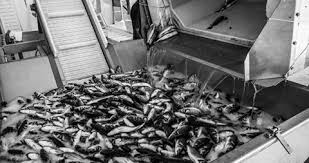Given the growing importance of both production and consumption of global fish products in developing countries, the fish sector offers significant opportunities for poor farmers to increase their income through sustainable fish production and to improve and diversify their diets by increasing fish consumption. Therefore, to intensify aquaculture for sustainable purposes, it is crucial to raise and enhance productivity.
Current Status of Aquaculture in Africa
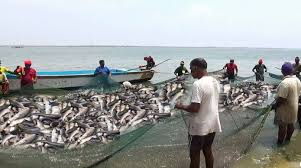
Aquaculture has been practiced in Egypt since around 2500 BC, and many traditional methods of capturing and cultivating fish are still in use today. However, after these early developments, there was little progress in African aquaculture until modern times when serious efforts to promote it began after the Second World War.
In 1995, the total production of finfish from sub-Saharan Africa was estimated at 29,434 metric tons. By 2001, Africa’s contribution to global fish production was approximately 20,000 metric tons, accounting for only 0.2% of the global output. Nigeria is responsible for more than half of the production in sub-Saharan Africa, with six countries—Nigeria, Zambia, Madagascar, Togo, Kenya, and South Africa—contributing 89% of the total production.
Aquaculture in Africa primarily focuses on Cichlids, Silurid catfish, and Cyprinids, which contribute 43%, 23%, and 15% to total production, respectively. This is a marked departure from the global trend, where Cyprinids dominate, accounting for 62% of total production.
The emphasis on Cichlids, particularly tilapia, has been identified as a constraint due to issues such as precocial development and overpopulation of ponds with small-sized fish. Other major technological constraints to aquaculture development in sub-Saharan Africa include:
- Inadequate supply of fish feed ingredients
- Prohibitive transport costs
- Lack of juveniles for stocking ponds
- Poor fish health and disease management
Raising Aquaculture Productivity in Nigeria
The expansion and intensification of aquaculture production have led to increased movements of live aquatic animals and products, raising the risk of disease spread.
Poor water quality, high feeding costs, and scarce or poor-quality seed for stocking can result in pond abandonment and land degradation. These challenges highlight the need for a framework to ensure that fish is consistently available and affordable for every Nigerian.
The Role of Biotechnology in the Fish Sector
Compared to advancements in terrestrial animal production, breeding technology in aquaculture is still in its early stages. Genetic modification and biotechnology hold significant potential to improve the quality and quantity of fish reared in aquaculture, though not without controversy and risks.
Biotechnology can enhance reproduction and early developmental success in cultured organisms. Improved feed conversion efficiency in genetically altered fish could reduce feed inputs and waste per unit output, potentially lessening environmental pressure. Better growth and survival rates could lower production costs, making fish more affordable for consumers.
Read Also: 16 Medicinal Health Benefits Of Scleromitrion diffusum (Spreading Diamond Flower)
Fish Feed and Nutrition Challenges and Solutions
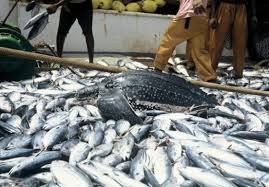
Aquaculture experts note that fish feeding accounts for over 60% of total production costs, primarily due to the rising cost of fishmeal and fish oil in aquafeeds. Intensive research has focused on finding alternative feed ingredients to replace fishmeal and other expensive conventional ingredients.
For example, replacing fishmeal with chicken offal has been successful at a 75% level, offering significant advantages for catfish production. Similarly, the use of feather meal and shrimp meal as fishmeal replacements has shown promise. Efforts are also underway to replace plant protein sources, though the presence of anti-nutritional substances remains a limiting factor. For instance, the use of leucaena seed meal as a replacement for soybean meal is being explored.
Pollution Control and Waste Management in Aquaculture
As the need for intensive aquaculture grows, large-scale systems using higher input levels often generate significant outputs that can create environmental problems. Effluents from aquaculture can harm both the environment and surrounding farms.
Minimizing water exchange through recirculation can reduce water demand and effluent issues. Other steps to improve water quality include calibrating feed amounts to minimize waste, integrating systems that raise complementary organisms to reduce unwanted outputs, and investing in capital improvements like aerators and pumps.
The Role of Policy Makers in Sustainable Fish Production
Policymakers play a critical role in ensuring that the fish sector contributes to poverty reduction and environmental sustainability in Nigeria. They should facilitate institutions that improve the governance of marine, coastal, and freshwater fisheries.
Transparent and process-based food safety systems must be developed to protect consumers and address pollution sources that endanger human health and sustainability.
Favorable policies promoting market information, certification, and extension systems are essential to support small-scale fish farmers. Subsidies currently directed toward marine fishing operations should be redirected to improve resource management and information systems. Finally, a monitoring and planning function for fisheries policy should be established within relevant ministries to ensure the sector receives adequate attention.
Fingerlings Production and Hatchery Management: Lessons from Africa
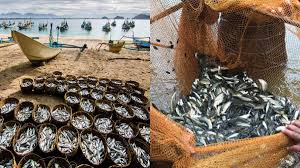
During the late 1970s and early 1980s, government and donor-funded hatcheries for Clarias gariepinus were established in Cameroon, Central African Republic, Ivory Coast, and Nigeria. By 1989, only those in the Ivory Coast and Central African Republic remained operational.
A hatchery was developed in Rwanda in 1989 and in Malawi in 1992, though the latter fell into disrepair by 1997. Establishing hatcheries in countries with limited infrastructure requires ingenuity, and some remarkable successes have been achieved.
However, production from these hatcheries remains low and insufficient for large-scale operations. In South Africa, private hatcheries have outperformed government-funded ones, with most government hatcheries being privatized and becoming economically viable.
Spawning and Fry Production: Techniques and Innovations
Various hormonal preparations, including HCG, DOCA, Carp Pituitary Suspension, Progestagen, Pimozide, and LH-Rha, have been used to induce spawning in African catfish. However, the catfish farming community in Africa now primarily uses a homoplastic pituitary gland suspension, which is reliable, cost-effective, and practical. Pituitaries are removed from sexually mature catfish during the spawning season and stored for up to 18 months without losing efficacy.
The pituitaries are homogenized and injected into females, with spawning typically occurring 12-20 hours later, depending on temperature. Fertilization is achieved using sperm from at least two males, and fertilized eggs are incubated on mosquito mesh screens or aquatic plant roots.
Hatching Nutrition and Feeding: Best Practices
After hatching, larvae are transferred to rearing tanks and fed a complete dry feed every two hours, supplemented with Artemia nauplii for the first 3-5 days. After 10-15 days, they are moved to nursery ponds at a density of 2,000 fry/m².
Juveniles are graded into size classes and fed a 38% protein diet every four hours. Survival rates from hatching to the end of the nursery phase average 40%. Larvae can also be reared in organically fertilized ponds, supplemented with agricultural by-products like brewery waste or rice bran.
Nutrition of Larvae and Early Juveniles: Key Considerations
High-density rearing of catfish larvae requires a reliable source of high-quality feed. Live organisms like rotifers, cladocerans, and Artemia nauplii have been used, though their collection is seasonal and costly.
Artificial dry feeds based on single-cell protein (SCP) Torula yeast and fishmeal have been successfully formulated. Live food is essential for the first few days of exogenous feeding, with Artemia nauplii recommended for the first 4-5 days. Weaning onto dry feed begins 4-5 days after exogenous feeding starts.
Nutritional Requirements During the Grow-Out Phase
From six weeks of age, the dietary requirements of African catfish remain consistent, though ration sizes decrease as fish grow. Growth rates decline from 14% at four weeks to 2% at ten weeks and older. A diet containing 38-42% crude protein and 12 kJ/g of energy is optimal during this phase. Programmed least-cost formulation is widely used to combine ingredients efficiently while meeting nutritional requirements.
Read Also: 12 Medicinal Health Benefits Of Renealmia alpinia (Pink cone ginger)
Fish Health and Disease Management: A Critical Aspect
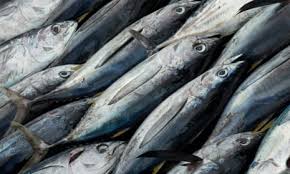
Fish disease, characterized by unhealthy body conditions, can lead to reduced growth, impaired reproduction, and high mortality rates. Disease outbreaks are more common in culture systems than in natural water bodies due to factors like high organic material input, stagnant water, and overcrowding. Common diseases in cultured catfish include Trichodina infections, bacterial kidney infections, and Gyrodactylus infections. Preventive measures, such as using pathogen-free water and treating ponds before stocking, are essential.
How Does a Farmer Identify Diseased Fish?
Farmers can identify diseased fish through behavioral and physical signs. Behavioral signs include sluggish swimming, gasping for air, and loss of appetite. Physical signs include ragged fins, lesions, body discoloration, and pale gills. Early detection is crucial for effective disease management.
A. Types of Diseases in Fish
Fish diseases can be categorized into:
- 1. Infectious Diseases: Caused by bacteria, fungi, or viruses.
- 2. Parasitic Diseases: Caused by protozoans, crustaceans, or worms.
- 3. Nutritional Diseases: Resulting from dietary deficiencies or imbalances.
- 4. Environmental Diseases: Caused by pollutants from agricultural, industrial, or domestic sources.
B. Prevention of Diseases in Aquaculture
Preventing diseases is more effective than treating them. Key preventive measures include:
- Providing pathogen-free water
- Controlling wild fish and predators
- Avoiding overcrowding
- Managing broodstock effectively
- Conditioning ponds through drying and liming
- Treating fish before stocking
By implementing these strategies, fish farmers can ensure sustainable and profitable aquaculture production in Nigeria.
Do you have any questions, suggestions, or contributions? If so, please feel free to use the comment box below to share your thoughts. We also encourage you to kindly share this information with others who might benefit from it. Since we can’t reach everyone at once, we truly appreciate your help in spreading the word. Thank you so much for your support and for sharing!
Read Also: Complete Composting Guide for Beginners

